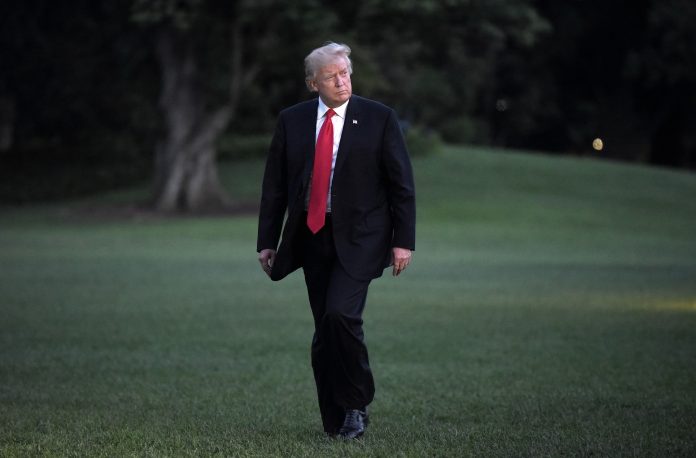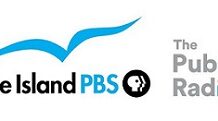
PROVIDENCE – The new infrastructure bill out forth by President Donald Trump this week proposed a $200 billion, 10-year federal investment that the White House believes will spur an additional $1.3 trillion in investments from private sources, and state and local governments.
The proposal sets up a $100 billion incentives program that would be largely based on evidence from an applicant on how it will secure and commit non-federal revenue and sustainable long-term funding.
In this spirit, the plan outlines a process to provide states tolling flexibility as well as provide a way for states to monetize rest stops, among other changes.
Federal funds would not be allowed to exceed 20 percent of a project’s total funding in the incentive program. Currently, federal funding for projects is capped at 80 percent of the total project costs.
It is unclear what impact the proposal would have on current Rhode Island projects such as RhodeWorks, which rely heavily on federal funding.
“We haven’t reviewed the full plan but will be doing so,” said Charles St. Martin, spokesman for the R.I. Department of Transportation. “The Raimondo administration’s focus has been on making our own investments in infrastructure since first taking office.”
In fact, the state is constructing gantries for truck tolls this week, and tolls are expected to launch relatively soon to help fund the RhodeWorks program, which is a 10-year program to rebuild the state’s poorly maintained bridges and roads. The tolls as well as federal GARVEE bonds – themselves notes issued in anticipation of future federal funds – would provide the funds for the program.
Meanwhile, the Rhode Island delegation took exception to the president’s infrastructure proposal.
“The president talks about a big infrastructure program, but most of that money is state, local and private dollars that would be spent anyway,” stated Sen. Jack F. Reed. “And the federal share? That will largely be offset by the large cuts to the TIGER program and other discretionary grants at the Department of Transportation and other agencies.”
“If it became law, President Trump’s infrastructure plan would completely fail to rebuild our crumbling bridges, roads and schools,” said Rep. David N. Cicilline. “What it would do is impose Trump tolls on working people, increase the strain on state and local governments, and sell out our critical infrastructure to powerful corporations.”
The incentive program would apply to the following government infrastructure: surface transportation and airports, passenger rail, ports and waterways, flood control, water supply, hydropower, water resources, drinking water facilities, wastewater facilities, stormwater facilities, and Brownfield and Superfund sites.
CEO of the Associated General Contractors of America Stephen E. Sandherr issued a statement that embraced the direction and intention of the bill, but acknowledged that it can and should be changed. “The president has outlined a needed and thought-provoking proposal to rebuild and improve the nation’s aging and over-burdened public infrastructure,” he said. “The details of this proposal are important and many, including this association, will seek changes to further improve upon the president’s concept. Yet the most significant aspect of today’s release is that it signals the start of what should be a timely, bipartisan and bicameral process to identify the best ways to fund and finance desperately needed improvements to our public infrastructure.”
The program also would commit $50 billion to a Rural Infrastructure Program, the majority of which would be distributed to governors of each state under their discretion.
The plan also includes intentions of the federal government to sell assets to state and local governments, although no Rhode Island assets were named in particular.
The proposal gives the Interior Department authority to approve oil and gas pipelines that cross lands controlled by the National Park Service, a change that’s been opposed by environmental groups. Currently, congressional approval is required for each project, resulting in time-consuming delays, according to the plan. There’s also is a section for allowing Veterans Affairs to improve facilities by allowing the agency to retain proceeds from the sale of properties and to exchange existing facilities for new ones.
The White House said it wants to offset the $200 billion in the 2019 budget with spending cuts elsewhere – including from some transit and transportation funds the administration doesn’t think have been spent effectively. But Trump is open to new sources of funding, a senior White House official has said.
The plan also called for investment in rail, although in his proposed budget, Trump also proposed to cut in half the federal subsidy for Amtrak, the troubled national passenger rail service that has experienced three fatal crashes in the past two months.
Michael Friedberg, executive director of the Coalition for the Northeast Corridor, released a statement that said, “President Trump’s infrastructure plan is an important step toward unlocking new funding that can drive economic growth across the nation. However, the future is still unclear for the Northeast Corridor rail system, which carries more than 820,000 riders per day but remains in dire need of federal investment to fix crumbling infrastructure and advance projects that have been stalled for years.”
He added that, “Letting the Corridor slip further into disrepair could upend the American economy, threaten jobs across the region and undermine President Trump’s pro-growth agenda.”
Read the infrastructure proposal here
Reaction
There are at least six committees in the House and five in the Senate that will consider elements of the plan, White House officials have said. The Senate Environment and Public Works Committee plans a March 1 hearing with Transportation Secretary Elaine Chao.
The rollouts of the infrastructure and budget plans on the same day quickly sparked a dispute between leading Democrats and the administration. Democrats, who have called for a $1 trillion federal commitment for infrastructure, criticized Trump for proposing to spend $200 billion while cutting funding for transit and other transportation programs even more deeply in his budget proposal. Senate Minority Leader Chuck Schumer said he counted more than $240 billion in cuts.
The White House took issue with Schumer’s analysis, including his tally of the shortfall to be faced by the Highway Trust Fund, which relies on fuel taxes and becomes insolvent after 2021 if no new funding is approved. While Schumer counts that as a $122 billion spending cut, the administration said the budget simply reflects that outlays will exceed revenue.
“Given the urgent need to rebuild our nation’s infrastructure, it’s odd that the senior senator from New York would misunderstand elementary funding features of our transportation system,” John Czwartacki, a spokesman for the Office of Management and Budget, said in a statement. “One might assume that the minority leader, and a former member of the Senate Finance Committee would understand the aspects of, well … finance.”
‘Misses the point’
Jeffrey Rosen, deputy secretary at the Transportation Department, also took issue with the figures cited by Democrats.
Their complaint “misses the point” of the Trump infrastructure plan, which is to put limited resources “into places where they can produce better results,” Rosen said during a Monday evening call with reporters.
While the budget proposal does cut existing spending, the public works plan will do a better job of using federal funds to draw private investment, he said. Taken as a whole, the proposal “is a major increase in overall infrastructure outlays, which if used wisely and properly, improve the quality of life for Americans everywhere,” he said.
Trump’s plan relies on using much of the $200 billion in his proposal in incentives to spur states, localities and the private sector to raise and spend the balance of the promised $1.5 trillion. The driving principal is that the federal government doesn’t own most infrastructure and should focus on encouraging local funding and streamlining the permit process.
The plan would create a grant competition with preference given to applicants that commit their own revenue such as taxes, fees or tolls, and it also seeks to encourage more investment with proposals that include relaxing restrictions on states putting tolls on interstates to raise money for projects.
Trust fund insolvency
Schumer dubbed it the “Trump toll plan,” saying it would increase burdens on local governments and not improve ailing infrastructure.
Trump’s plan didn’t address the looming insolvency of the Highway Trust Fund, but Pennsylvania Rep. Bill Shuster, the Republican chairman of the House Transportation and Infrastructure Committee, said the long-term sustainability of the fund must be addressed.
Shuster has urged fellow Republicans to consider raising the federal gas tax for the first time since 1993. While groups including the U.S. Chamber of Commerce support the idea and the White House is neutral, key Republicans and entities including the network led by the billionaire industrialists Charles and David Koch are opposed.
McCarthy, the majority leader, said passing a gas-tax increase would be “a little tough” because it hurts lower-income drivers who have to pay a higher percentage of their income for taxes than wealthier people.
Chao repeatedly said during the Monday call with reporters that “nothing is off the table” in terms of how the program will be funded and urged lawmakers from both parties to work together.
“We all want the best infrastructure in the world, and we don’t want to pay for it,” Chao said. “Unfortunately, that can’t happen.”
Bloomberg reporters Alan Levin and Mark Niquette as well as PBN web editor Chris Bergenheim contributed to this report.












